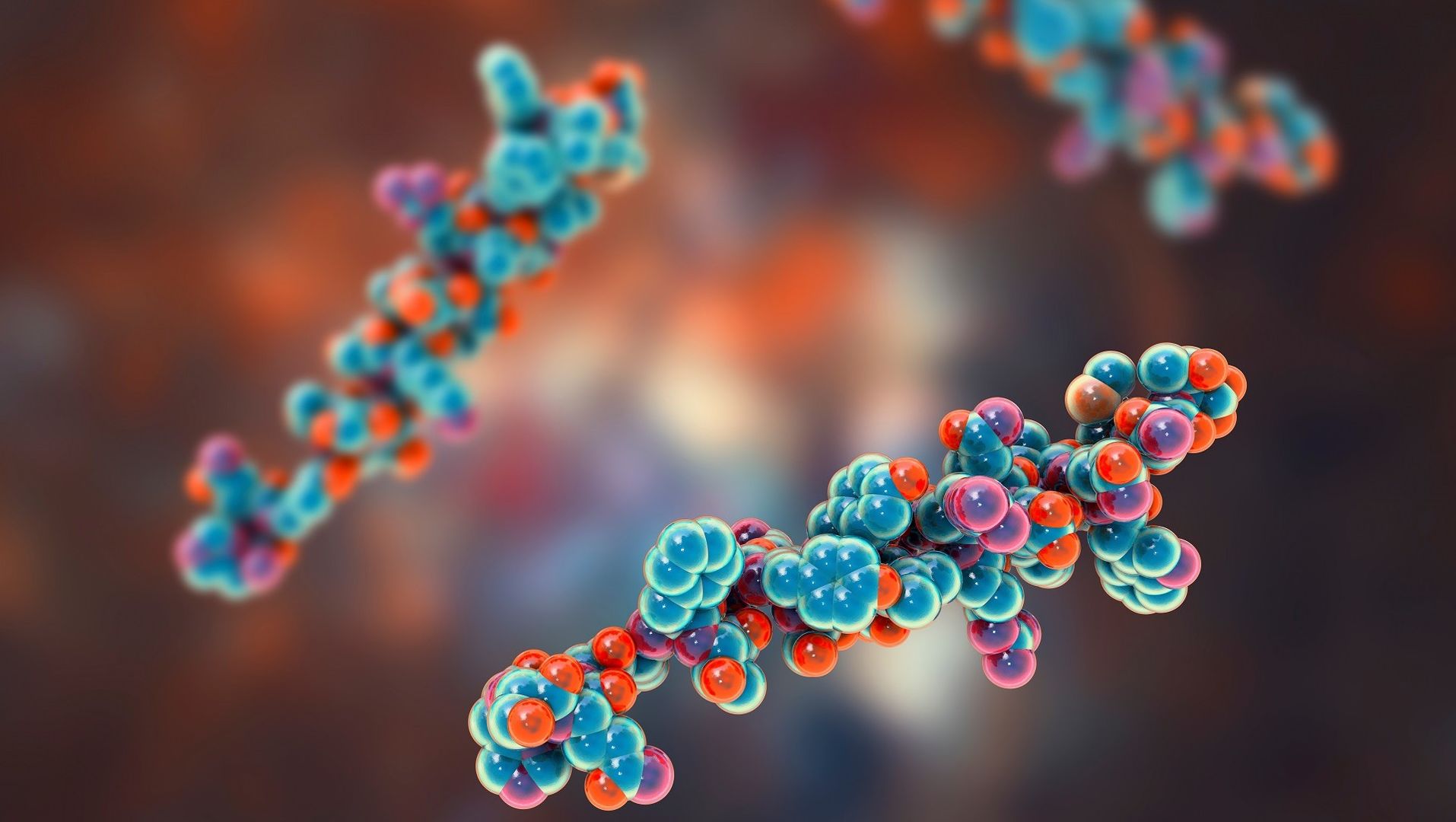At Creative Proteomics, we possess the ability to synthesize peptides and DNA sequences of exceptional excellence and purity, meticulously customized to precisely meet the unique demands and objectives of your research undertaking. As pioneers within the field of peptide analysis, we provide a diverse array of sophisticated fluorescence-based methodologies for examining the intricate interplay between peptides and DNA. These encompass cutting-edge techniques such as fluorescence resonance energy transfer (FRET), fluorescence polarization (FP), and fluorescence anisotropy assays.
What is Peptide-DNA Interaction Detection?
The binding of DNA to peptides is an extremely important phenomenon. Virtually all aspects of cellular function, such as transcriptional regulation, chromosome maintenance, replication, and DNA repair, depend on the interaction of peptides with DNA. Peptide-DNA Interaction Detection is a scientific approach to study and understand the interactions between peptides (short chains of amino acids) and DNA (deoxyribonucleic acid), the molecule that carries genetic information in living organisms. Peptides can interact with DNA through various mechanisms, such as electrostatic interactions, hydrogen bonding, and hydrophobic interactions. These interactions can have important implications in biological processes such as gene regulation, DNA replication, and DNA repair.
Peptide-DNA Interaction Detection Services by Creative Proteomics
- Experimental Design: Experts in this field can help design experiments based on your research goals and requirements. They can provide insights on different techniques suitable for your study.
- Peptide Synthesis: Peptides used for interaction studies need to be synthesized accurately. We can assist in synthesizing custom peptides with specific sequences and modifications demanded by researchers.
- DNA Preparation: DNA molecules used in interaction studies must be properly prepared and labeled. We can help in the preparation, labeling, and purification of DNA samples, making them suitable for interaction studies.
- Biophysical Techniques: Various biophysical techniques are employed to study peptide-DNA interactions, including Surface Plasmon Resonance (SPR), Isothermal Titration Calorimetry (ITC), Circular Dichroism (CD), and Fluorescence techniques. Our team may offer expertise in performing these techniques or might perform the experiments on your behalf.
- Microarray Analysis: At Creative Proteomics, we have microarray platforms for the analysis of peptide-DNA interactions. Our experimental experts perform microarray experiments, analyze data, and provide insights into interactions to meet customers' needs.
- Computational Analysis: Computational analysis plays a crucial role in studying peptide-DNA interactions. Our experts with expertise in bioinformatics can assist in analyzing the data, predicting interaction models, and interpreting results.
- Data Interpretation and Reporting: We can help in interpreting the data obtained from experiments and prepare comprehensive reports summarizing the findings. They may also provide recommendations for further research.
Our Capabilities
At Creative Proteomics, we are dedicated to unraveling the intricate interplay between peptides and DNA. Our cutting-edge technologies and in-depth expertise enable us to investigate the dynamic interactions, to discern the constituent proteins within these complex assemblies, and to decipher the nucleic acid sequences and potential structures necessary for their formation. Such endeavors are imperative in comprehending the pivotal function of these complexes in orchestrating fundamental cellular processes.
| Analysis Methods |
Strengths |
Limitations |
| Chromatin Immunoprecipitation (CHIP) Assays |
quantitative when coupled with qPCR analysis |
requires designing specific primers |
| DNA Electrophoretic Mobility Shift Assay (EMSA) |
non-radioactive EMSA possible using biotinylated or fluorescently labeled DNA probes |
difficult to quantitate |
| DNA Pull-Down Assays |
compatible with immunoblotting and mass spectrometry analysis |
requires nuclease-free conditions |
| Microplate Capture and Detection Assays |
the use of ELISA-based technology increases speed and throughput |
requires antibodies with affinity for DNA-bound native proteins (i.e., supershift antibodies) |
| Reporter Assays |
powerful tool for mutational analysis of promoters |
artifacts due to gene dosage can occur |
Our Analysis Methods in Peptide-DNA Interaction Detection
Researchers use various experimental techniques to detect and analyze peptide-DNA interactions. Common methods include:
- Electrophoretic Mobility Shift Assay (EMSA): This technique involves running a gel electrophoresis to separate bound peptide-DNA complexes from the unbound DNA. The shift in mobility of DNA bands indicates the presence of peptide-DNA interactions.
- Surface Plasmon Resonance (SPR): SPR measures changes in the refractive index caused by the binding of peptides to DNA immobilized on a sensor chip. This method allows real-time monitoring of peptide-DNA interactions.
- Fluorescence spectroscopy: This technique employs peptide and DNA probes intricately labeled with fluorophores to monitor alterations in fluorescence intensity or spectral characteristics as a result of their interaction. We harness the power of fluorescence resonance energy transfer (FRET) and fluorescence anisotropy to explore the DNA-peptide interactions.
- Isothermal Titration Calorimetry (ITC): ITC measures heat changes during peptide-DNA binding, providing information about the thermodynamics of the interaction, including binding affinity, stoichiometry, and enthalpy changes.
- DNA Footprinting: This technique involves chemically modifying DNA samples in the presence or absence of peptides, followed by DNA sequencing or gel electrophoresis analysis. It helps identify specific regions of DNA that are protected against modification by peptide binding.
* For research use only. Not for use in diagnostic procedures!
Our customer service representatives are available 24 hours a day, 7 days a week.


